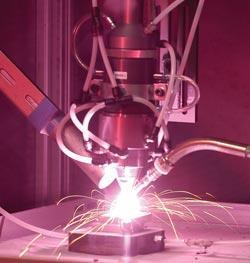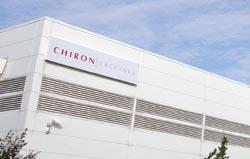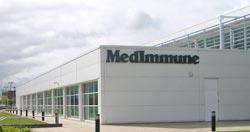England's northwest is one of the UK's top clusters for the biomedical sector. Yfke van Bergen looks at the role the University of Manchester has played.
England’s northwest is one of the UK’s top clusters for the biomedical sector. Yfke van Bergen looks at the role the University of Manchester has played.
A biotech revolution is stirring in England’s northwest. As anyone who has visited the region knows, the northwest is buzzing with biopharmaceutical companies, new academic institutes, industrial facilities and incubators. According to Bionow, a biotechnology, pharmaceutical and healthcare cluster programme within the Northwest Regional Development Agency, the area is one of the UK’s top three clusters for the biomedical sector.
The region boasts some 200 biomedical companies, including seven multinational pharmaceutical companies, employing over 20,000 people. In 2003, the region exported ?3.8 billion in pharmaceutical products, making it the UK’s largest producer of pharmaceuticals. The northwest is home to AstraZeneca’s largest R&D facility and the UK’s biggest university - the University of Manchester - which formed from the merger of the Victoria University of Manchester and the University of Manchester Institute of Science and Technology (UMIST) in October 2004.

According to its strategic plan, Towards Manchester 2015, the university aims to be one of the top 25 research institutions in the world by 2015. Ambitious? Certainly. But it seems the university’s determination is paying off; in November 2005, it was named higher education institution of the year 2005 in the inaugural The Times Higher awards. The judges were impressed by the success of the merger and the university’s inspirational vision. Judge Bernadette Porter, former vice-chancellor of Roehampton University, said ’it was make or break, and all the signs are that Manchester is making it. It does seem to have pulled off the trick of being more than the sum of its parts’.
Attracting top talent is high on the new university’s list of priorities; by 2015 it aims to have five Nobel laureates on its staff. Alan Gilbert, president and vice-chancellor of the university, is determined to create ’an educational and research powerhouse’ with a reputation for scholarly excellence. ’By investing heavily in world class people and offering them state-of-the-art facilities, we aim to make the University of Manchester a destination of preference for many of the best students, teachers, researchers and scholars in the world,’ he says. But to lure top talent to the northwest, the region will need to battle against the general perception that it is an underdog. Fortunately, things have changed dramatically in recent years, with Manchester’s rejuvenation drawing in substantial infrastructure investment.
Nancy Rothwell, the university’s vice-president for research, confirms that the university is working hard to meet its ambitious goals. ’We have established demanding and wide ranging goals for our 2015 vision, covering issues such as teaching and learning, economic development, widening participation and community value. The research goals are particularly challenging, but we are extremely pleased with our progress to date,’ she says, adding that ’this is an outstanding area to work in - it has a high international profile, but also real regional pride.’
She explains that the university is very fortunate to have the support of the Northwest Regional Development Agency, which provides programmes and funding to ensure the sustainable economic development and regeneration of the northwest. ’It is interesting that the northwest is so often cited as having the most innovative regional development agency,’ she says. ’I would agree completely; they have recognised the real value of research and development for the regional economy and well-being and have been extremely supportive of the university.’
Technology transfer success
The University of Manchester’s commercialisation of its intellectual property has played a significant role in establishing the northwest as one of the top three bioscience clusters in the UK. The university employs some 9000 local people, but has generated thousands of jobs in Manchester and the northwest through its formidable number of spin-off companies.
Rod Coombs, the university’s vice-president for innovation and economic development, says: ’Well over a hundred spin-off companies have been produced by the university over the past 10 years or so. There are currently 55 spin-off companies in which the university still holds an equity stake, and many others which are trading successfully, but from which we have now exited.’

The key to the university’s success, he says, is University of Manchester Intellectual Property (UMIP), the university’s own technology transfer and intellectual property commercialisation company. UMIP is one of the biggest technology transfer companies in the UK. Coombs explains that the university excels at identifying and nurturing young businesses. ’Last year the university generated well over 200 invention disclosures,’ he says. ’These are all assessed in great detail by our technology transfer company [UMIP], and those which have real commercial potential are then actively taken forward with full project management support and proof-of-concept investment. We typically create three to five new companies per year.’
One successful venture is Renovo, a biopharmaceutical company specialising in the development of drugs to prevent and reduce tissue scarring. Co-founded in October 2000 by Mark Ferguson and Sharon O’Kane, Renovo was established based on an impressive estate of patents arising from inventions made in Ferguson’s research laboratory at the University of Manchester. It is on track to be first to market with an anti-scarring drug, Juvista, which is about to enter the final phase of clinical trials.
Other successful spin-offs include Ai2, which won the Bionow biotechnology start-up of the year prize last November. The company, set up by Curtis Dobson of the university’s faculty of life sciences, specialises in developing novel antibacterial compounds to combat deadly hospital infections such as MRSA.
The university was well represented at the awards ceremony; the biotechnology company of the year award went to EpiStem, a company based in the University of Manchester’s incubator building specialising in epithelial tissue and stem cell analysis. Paul Bishop, at the university’s school of medicine, was awarded project of the year for his opticin project. Opticin is a member of the small leucine-rich repeat proteoglycan/protein family, which has been found to inhibit the formation of new blood vessels and might therefore have exciting therapeutic applications, such as inhibiting tumour growth and development.
These companies illustrate how the university capitalises on its strong links with the city’s hospitals. This is especially true in the area of cancer research. The Manchester Cancer Research Centre (MCRC) was established following the transfer of the Paterson Institute for Cancer Research to the University of Manchester. The MCRC is a centre of excellence that aims to double the level of cancer-related research activity within the university over the next five years. The hub of the centre will be at Manchester’s Christie Hospital, promoting close interaction between those dedicated to basic cancer research and those who provide patient care.
The university will also enter into a wider partnership with the Christie Hospital NHS Trust, other NHS trusts in the cancer network and Cancer Research UK to establish the Manchester comprehensive cancer network (MCCN). By combining the strengths of research within the MCRC with the specialist treatment available at the Christie Hospital, the MCCN has the potential to become the largest comprehensive cancer centre in Europe over the next five years.
Breaking the mould
One of the anticipated advantages of creating the University of Manchester was the chance to break out of the mould and create a university that is not strictly organised around traditional disciplines. The new university has certainly grasped the opportunity to set up interdisciplinary research centres. The most symbolic and ambitious of these projects is the newly opened Manchester Interdisciplinary Biocentre (MIB) (see Chemistry World, March 2005, p9). The paint is barely dry on the walls of the 13,700m2 building; the majority of its 500 prospective incumbents started moving into the building in mid-February. The aim of the centre is to integrate analytical tools and theoretical rigour from the physical sciences, engineering and mathematics into bioscience research by encouraging collaborative projects between experts from these different disciplines.
Stan Roberts, managing director of the Centre of Excellence for Biocatalysis, Biotransformations and Biocatalytic manufacture (CoEBio3) (see Chemistry World, July 2004, p11), which is housed within the MIB, says that ’there is a huge amount of excitement here with the opening of the MIB’. He adds that ’the CoEBio3 has recently received ?7.2 million funding from the DTI to accelerate it from being a national centre of excellence to become a unique global enterprise’.
This grant will fund the infrastructure of the centre as well as a state-of-the-art manufacturing facility, which will carry out large-scale enzyme production and biotransformations in 500L/1000L fermenters, a first for a UK university. This pilot plant facility, to be called the national industrial biotechnology facility, is being built in Wilton, Teesside, in partnership with the Centre for Process Innovation and is scheduled to be operational by the end of this year. The centre’s researchers have developed technologies for the optimisation of activity and stability of biocatalysts as well as inventive technologies and methods for scaling-up the reactions.
The overall aim of CoEBio3 is to provide efficient ways to convert simple feedstocks into high value fine chemicals, including pharmaceutical intermediates. Roberts explains that CoEBio3 has ample support, with 14 companies in its industrial affiliate cohort, including pharmaceutical and fine chemical groups (AstraZeneca, BASF, DSM, Lonza), suppliers (SigmaAldrich), small and medium-sized enterprises (Excelsyn, Novacta) and companies focused on enzyme discovery (Plymouth Marine Laboratories).
Investing across disciplines
But the MIB is just the first of several multidisciplinary science buildings that will attract top talent to the new university. The brand new Photon Science Institute will pioneer cutting-edge light and laser technologies, an area identified for growth by the UK’s Office of Science and Technology. Launched in mid-January with support from the Northwest Regional Development Agency, the ?40 million institute is the largest research and teaching centre of its kind in the UK. The institute’s research focuses on the development and application of new and existing laser technologies and systems spanning medicine, pharmaceutical, the life sciences and physical sciences, such as new optical materials (solar cells) and new non-invasive medical technologies.
Nearby, embedded within the faculty of life sciences, is the interdisciplinary Wellcome Trust Centre for Cell-Matrix Research. Researchers at the centre examine the function of the extracellular matrix, the substance that holds multicellular organisms together. The matrix plays a role in many human diseases, because it allows cells to move where they shouldn’t, which can create pathological conditions - for example, thrombosis is caused when platelets stick together to form clots. By investigating how cells interact with the surrounding matrix, the centre’s researchers are developing novel approaches to prevent and treat a range of diseases. Last year, the centre was awarded ?3 million to secure its infrastructure and continue its groundbreaking work for the next five years.

While many of the developments in the northwest are centred on single institutions, some schemes involve multiple players. One of the largest is the Northwest Institute for Bio-Health Informatics (NIBHI), a collaboration between the universities of Manchester, Liverpool, Lancaster, Central Lancashire, Salford, Liverpool John Moores, Daresbury Laboratories and AstraZeneca. The NIBHI will facilitate collaborative activities within and between the academic, industrial and health communities. It also aims to put informatics theory into practice in the northwest’s pharmaceutical and biotechnology sector.
Fostering links
Another large-scale collaboration between several northwest entities (Central Manchester & Manchester Children’s University Hospitals NHS Trust and the universities of Lancaster, Liverpool and Manchester) is the North West Genetics Knowledge Park. It is one of six genetics knowledge parks in the UK which foster links between industry, academic research and healthcare to guide further R&D. The park is a cohesive community of professionals in multidisciplinary research groups that share information, discoveries and experience in genetics.
The city’s second university, Manchester Metropolitan University, views all these developments as positive for the city. Its vice-chancellor anticipates that the critical mass created by the combined weight of Manchester’s two universities will woo internationally renowned scientists to Manchester. Not to be outdone by its neighbour, Manchester Metropolitan University plans to close four sites to help fund a ?200 million capital programme to create a 25,000-student megacampus at the university’s main All Saints base in Manchester. The reorganisation, which will take place over the next five to seven years, will create one of Europe’s largest university campuses.
With a combined total of 69,000 students at the two universities, it looks as if Manchester is set to become the learning city in the UK. If the successes of recent years are anything to go by, the region is well on its way to becoming a worthy adversary of the southeast’s golden triangle of Cambridge, Oxford and London.
Yfke van Bergen is a freelance writer based in Manchester, UK
Company profiles
AstraZeneca
Alderley Park, Macclesfield (largest R&D facility)
Tytherington, Macclesfield
Employees: over 65,000 people worldwide (58 per cent in Europe, 28 per cent in the Americas and 14 per cent in the rest of the world), with 11,900 people in R&D at 11 centres in seven countries (Sweden, the UK, US, Canada, France, India and Japan)
Global sales: $24 billion (?14 billion) in 2005
AstraZeneca is one of the world’s leading pharmaceutical companies, focusing on the discovery, development, manufacturing and marketing of high quality, effective prescription medicines. Its medicines are designed to fight disease in the following therapeutic areas: cancer, cardiovascular, gastrointestinal, infection, neuroscience and respiratory & inflammation. Its portfolio includes: Arimidex (cancer), Crestor (cardiovascular), Nexium (gastrointestinal disease), Seroquel (schizophrenia) and Symbicort (asthma and chronic obstructive pulmonary disease). Its corporate headquarters are in London, UK and R&D headquarters are in Sodertalje, Sweden.
BASF
Cheadle Hulme
Employees: Around 82,000 on five continents
Global sales: €42.7 billion (?26 billion) in 2005
BASF is a world leading chemical company, with five business segments: chemicals, plastics, performance products, agricultural products & nutrition, and oil & gas. BASF maintains business relationships with customers in more than 170 countries and supplies approximately 8000 products to a wide range of industries worldwide. The company’s strength is that it has an extremely broad product range and supplies a wide range industries. Major customers come from the agricultural, automotive, chemical, energy and construction industries. Important sectors also include the health, nutrition, electrical/electronics, textiles, packaging and paper industries.
Eli Lilly
Speke
Employees: more than 44,000 people worldwide, with approximately 8300 engaged in R&D
Global sales: ?14.6 billion in 2005
Eli Lilly is a leading, innovation-driven corporation committed to developing a growing portfolio of best-in-class and first-in-class pharmaceutical products. Lilly products treat depression, schizophrenia, attention-deficit hyperactivity disorder, diabetes, osteoporosis and many other conditions. The company markets its medicines in 143 countries, has major R&D facilities in nine, conducts clinical trials in more than 60 and has manufacturing plants in 13.
Bristol-Myers Squibb
Moreton
Employees: 43,000 worldwide
Global sales: $19.2 billion in 2005
Bristol-Myers Squibb provides pharmaceutical and related healthcare products in a range of therapeutic areas, including cancer, cardiovascular, infectious diseases, mental disorders, disorders of the central nervous system and wound therapeutics. Activities at the 11.2 acre pharmaceutical research institute site at Moreton include CMC chemistry, manufacturing, and control activities. This work requires integration of disciplines such as pharmaceutics R&D, analytical R&D (including analytical development, quality control, and stability), clinical supply operations, pharmaceutical development, strategic operations, quality assurance, and informatics.
Sanofi Aventis
Holmes Chapel
Employees: nearly 100,000 employees worldwide, with approximately 17,000 engaged in R&D
Global sales: €27.3 billion in 2005
Sanofi Aventis is one of the world’s largest pharmaceutical groups and the leader in France and Europe. It is present in 80 countries and has over 20 R&D centres on three continents. Key therapeutic areas include cardiovascular disease, thrombosis, disorders of the central nervous system, oncology, metabolic diseases, internal medicine and vaccines. Its portfolio mirrors the main priorities of the UK’s National Health Service which are to reduce mortality from heart disease; reduce mortality from cancer; reduce mortality from suicide; reduce adult smoking rates, tackle obesity and support people with long term conditions.
Chiron
Speke
Global sales: $1.9 billion in 2005

Chiron is a global biotechnology company that commercialises its products through three business units: biopharmaceuticals, vaccines and blood testing. Chiron Vaccines is among the world’s largest vaccines companies and has its headquarters in Oxford, UK, with a manufacturing facility in Speke, near Liverpool, and other facilities located throughout Europe, the US and Asia. The company is one of the world’s largest manufacturers of flu vaccines, and its portfolio of products also includes vaccines for meningitis C, yellow fever, rabies, tick borne encephalitis, haemophilus influenzae B (Hib), polio, mumps, measles and rubella (MMR) and diphtheria, tetanus and pertussis (whooping cough).
MedImmune
Speke
Employees: 2000 worldwide
Global sales: $1.2 billion in 2005

MedImmune focuses on infectious diseases, cancer and inflammatory diseases. The company has four marketed products and an advancing pipeline of promising candidates, all designed to treat or prevent a number of debilitating or life-threatening diseases. MedImmune is headquartered in Maryland, US, with facilities in Pennsylvania, California, Kentucky, the UK and the Netherlands.
GlaxoSmithKline
Ulverston
Employees: 110,000 employees in 80 countries, with over 15,000 engaged in R&D
Global sales: ?21.6 billion in 2005
GSK is a research-based pharmaceutical company. Headquartered in the UK and with operations based in the US, it is one of the industry leaders, with an estimated seven per cent of the world’s pharmaceutical market. It tackles the three priority diseases identified by the World Health Organization: HIV/AIDS, tuberculosis and malaria, and produces medicines that treat six major disease areas - asthma, virus control, infections, mental health, diabetes and digestive conditions. In addition, it supplies one quarter of the world’s vaccines and is developing new treatments for cancer.






No comments yet